Updated: 22 November 2024 by Sylwia (MyCrochetory)
Find out how to do a Russian join in just a few steps! Achieve smooth, knot-free yarn joins perfect for crochet and knitting.

If you’re a yarn lover, then you know the struggle: you’re cruising along on your crochet or knitting project, feeling all the creative energy, and then – you hit the end of the yarn.
Now you’ve got a choice: tie on a new ball and deal with those pesky loose ends, or… try something that’ll change your yarn game forever.
Let me introduce you to my favorite joining trick: how to do a Russian join.
In this post, I’ll walk you through how to do a Russian join with a super simple step-by-step photo guide and a video tutorial.
This technique gives you a strong, seamless join without any knots, so you can keep working with a flawless, smooth finish. Once you try it, you’ll wonder how you ever managed without it!
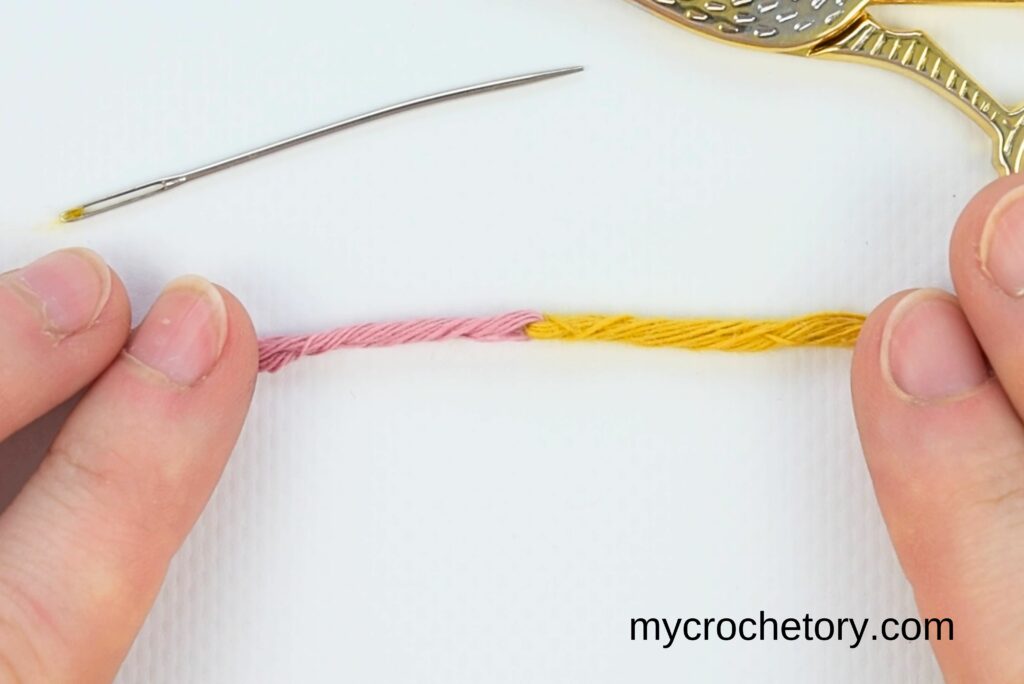
So, What Exactly Is the Russian Join?
Imagine a way to join two pieces of yarn without a bump or knot in sight. That’s the magic of the Russian join technique.
Knowing how to do a Russian join gives you a powerful trick for making your projects look professional. Instead of tying a knot, you weave each strand back into itself, creating a practically invisible connection.
It’s perfect for keeping projects looking polished – whether you’re working on a color change, a big blanket, or simply adding a new skein of yarn.
Why Learning How to Do a Russian Join Is Worth It
The Russian join method is a great choice for so many reasons. Here’s why I swear by it:
- No Extra Ends: You only need to join once, so no added loose ends to hide later.
- Strong and Smooth: The result is a very strong join without knots – great for those slippery yarns!
- Perfect for Color Changes: Switching colors? The Russian join blends them beautifully, so it’s ideal for colorwork.
Learning how to do a Russian join means you can handle all kinds of yarns, including acrylics and wool, with confidence.
Materials Needed to Do a Russian Join
To give this a go, here’s what you’ll need (and I bet most of it’s already in your stash):
- Two pieces of yarn (your current and new skein)
- A blunt tapestry needle or yarn needle (a sharp one can catch on the yarn strands)
- A few extra inches of yarn at each end to work the join
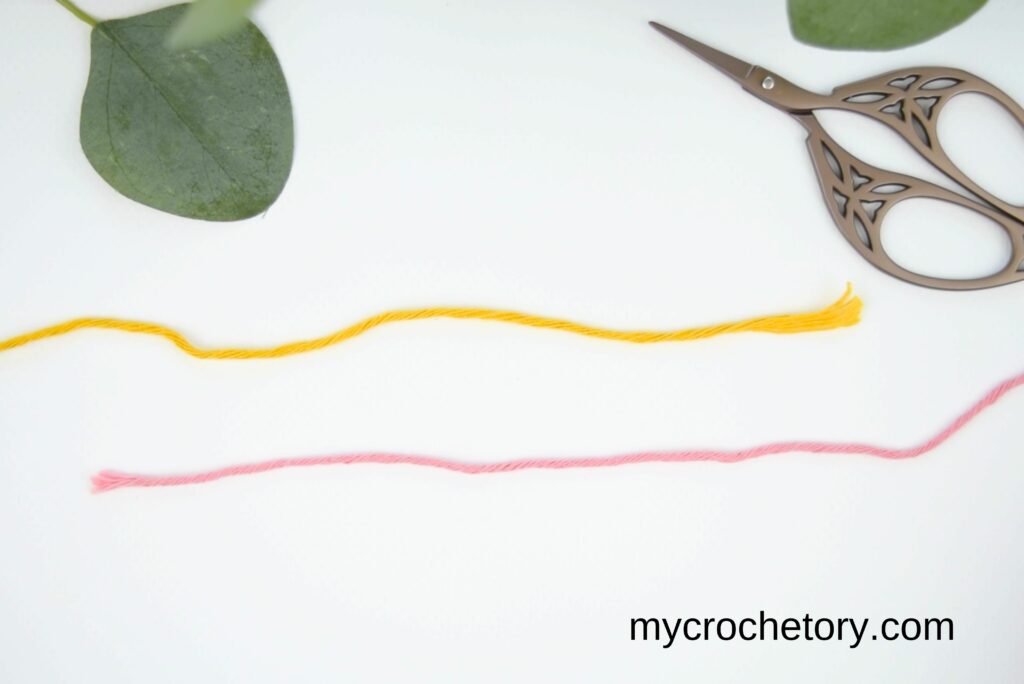
How to Do a Russian Join: Video Tutorial
I’ve made a quick video tutorial to show you how to do a Russian join step by step. It’s simple and easy to follow.
You’ll see exactly how to thread the yarn needle and create a smooth, seamless join. Perfect if you want to learn this technique quickly!
TIP: To view this video tutorial properly, please disable any ad-blocker you have running.
How to Do a Russian Join: Step-by-Step Guide
Here’s the fun part! You’re just a few steps away from joining your yarn like a pro. Let’s go over how to do a Russian join:
- Thread Your Yarn Needle
Start with the end of your working yarn. Thread it through the yarn needle, leaving a little loop at the end.

2. Create a Loop in the Yarn
Insert the tip of the needle back through the center of the yarn (a.k.a. the yarn’s “core”) to make a small loop. Weave through a few inches, catching the yarn strands as you go.
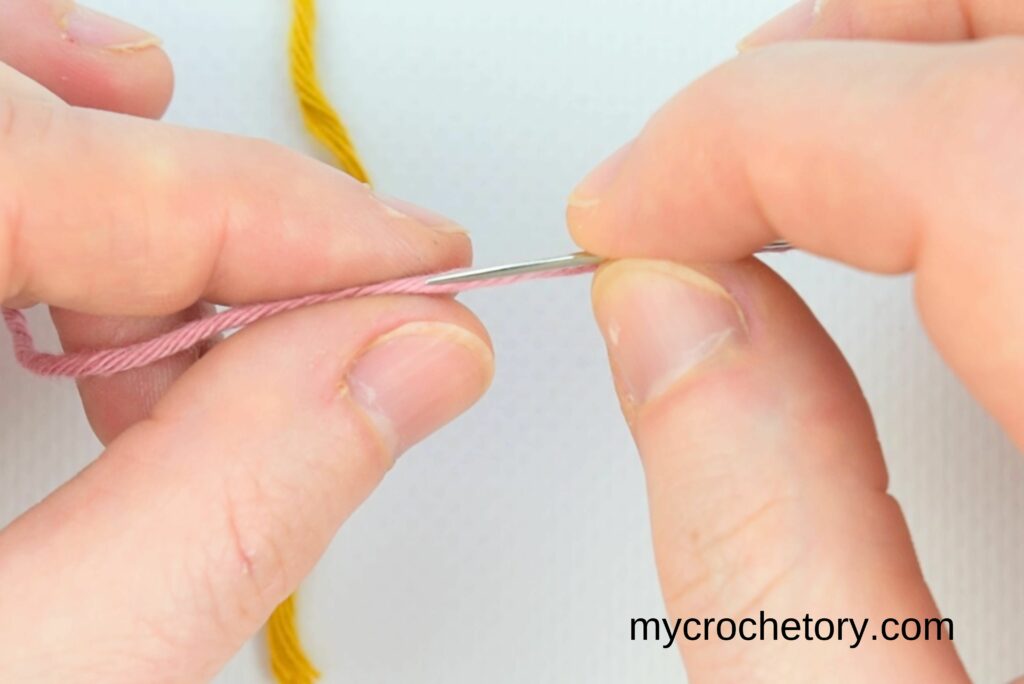
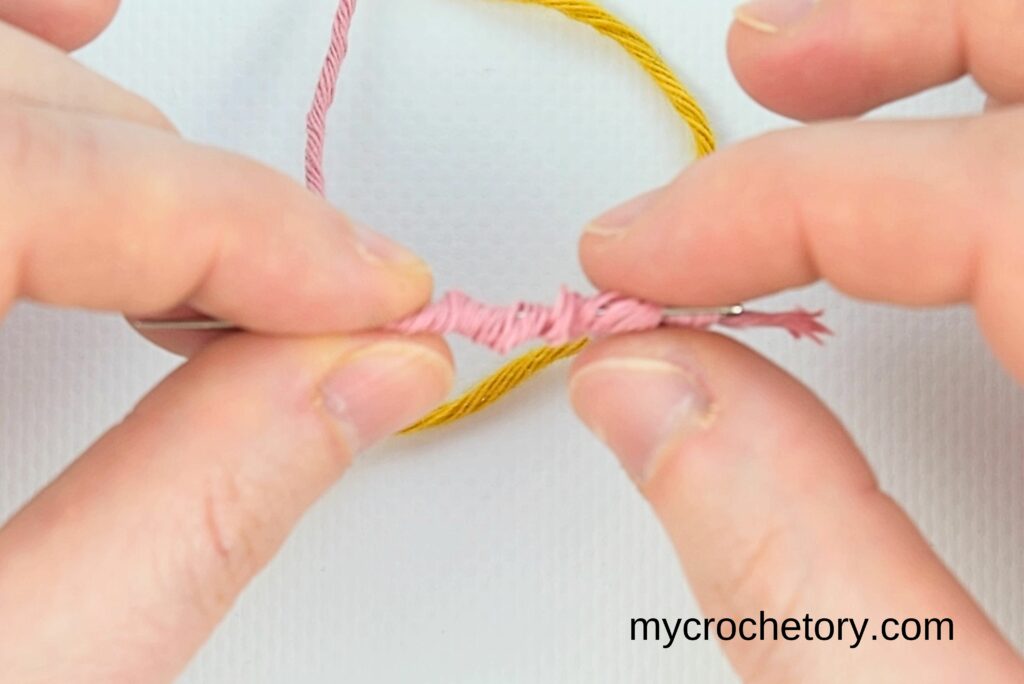
3. Add the Second Yarn
Take your second piece of yarn (your new yarn), and thread it through that little loop you made in step 2.

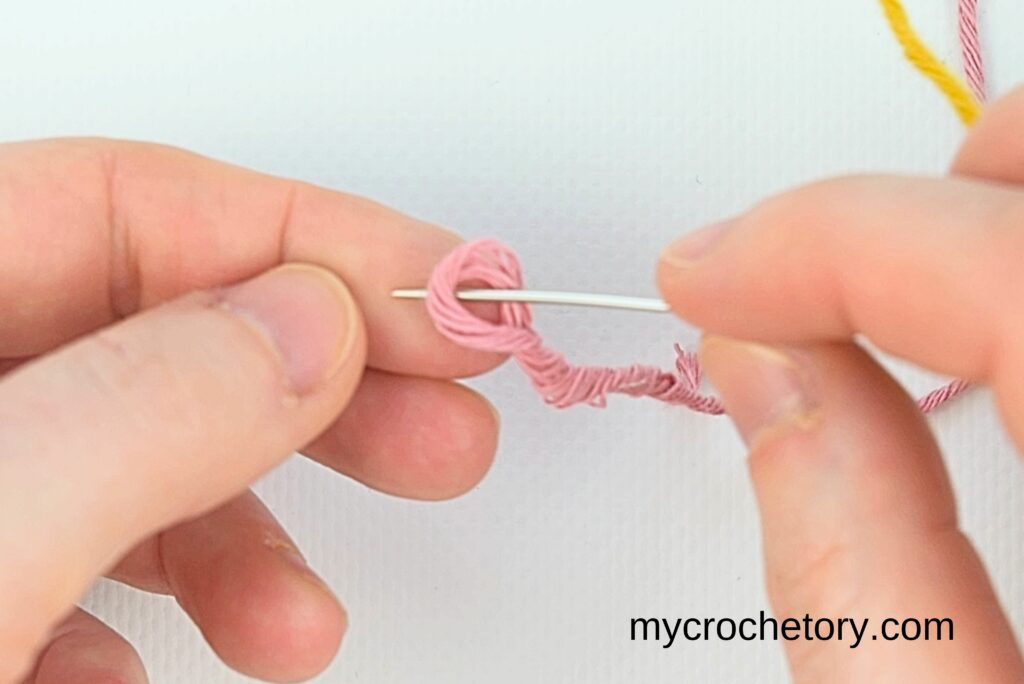
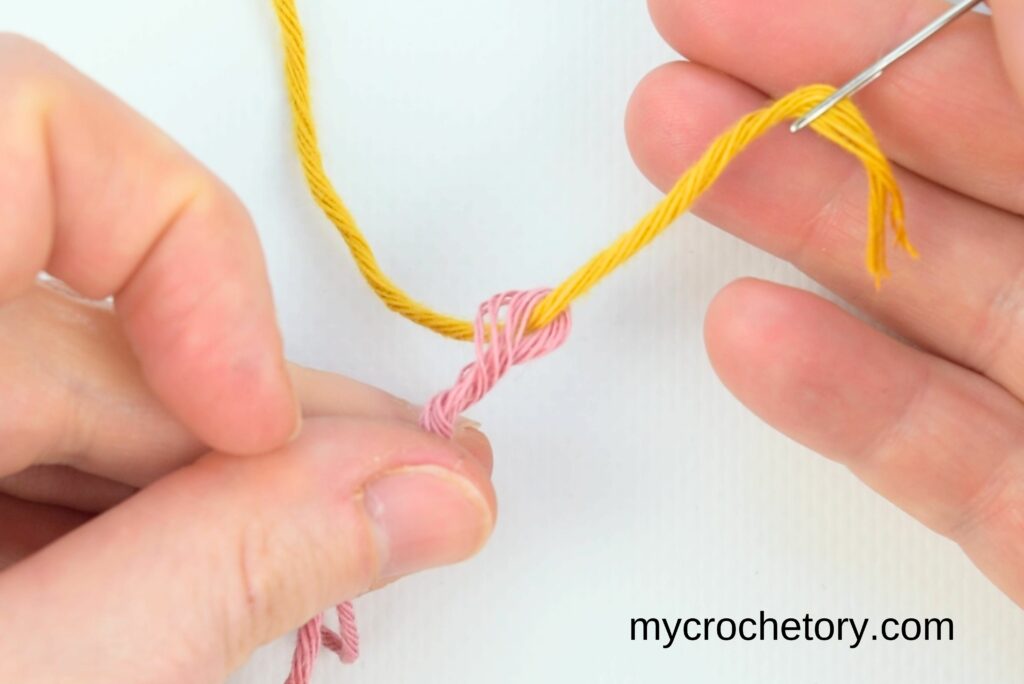
4. Weave the Second Yarn End
Just like with the first strand, weave the second yarn through itself for a few inches to secure it.
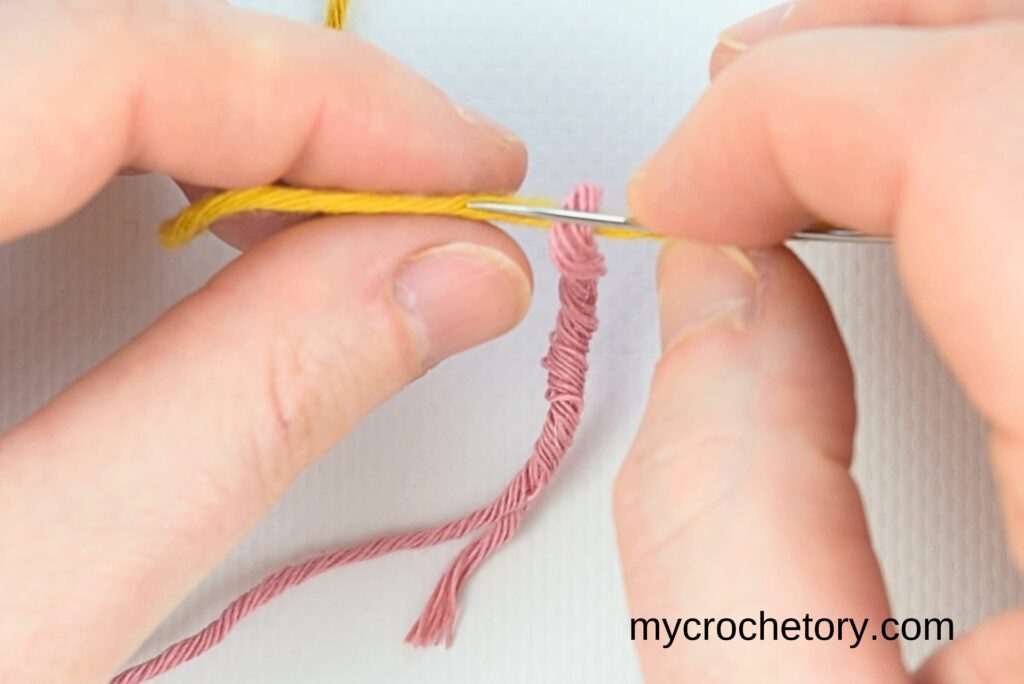
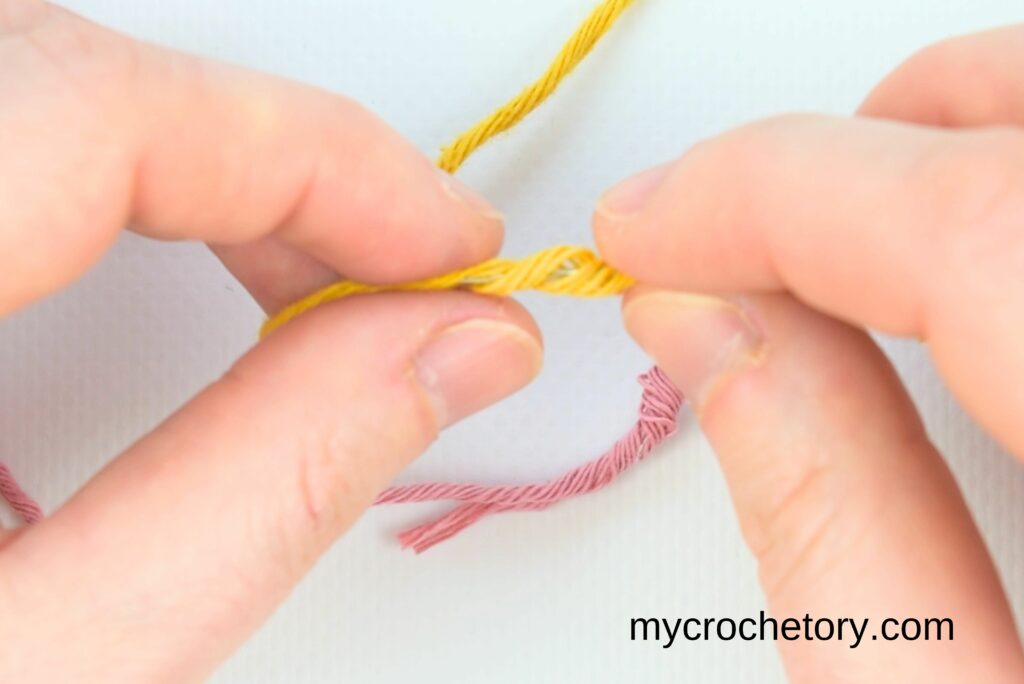
5. Tighten and Trim
Gently pull on each yarn to tighten the join. Trim any extra ends if needed – and voilà!
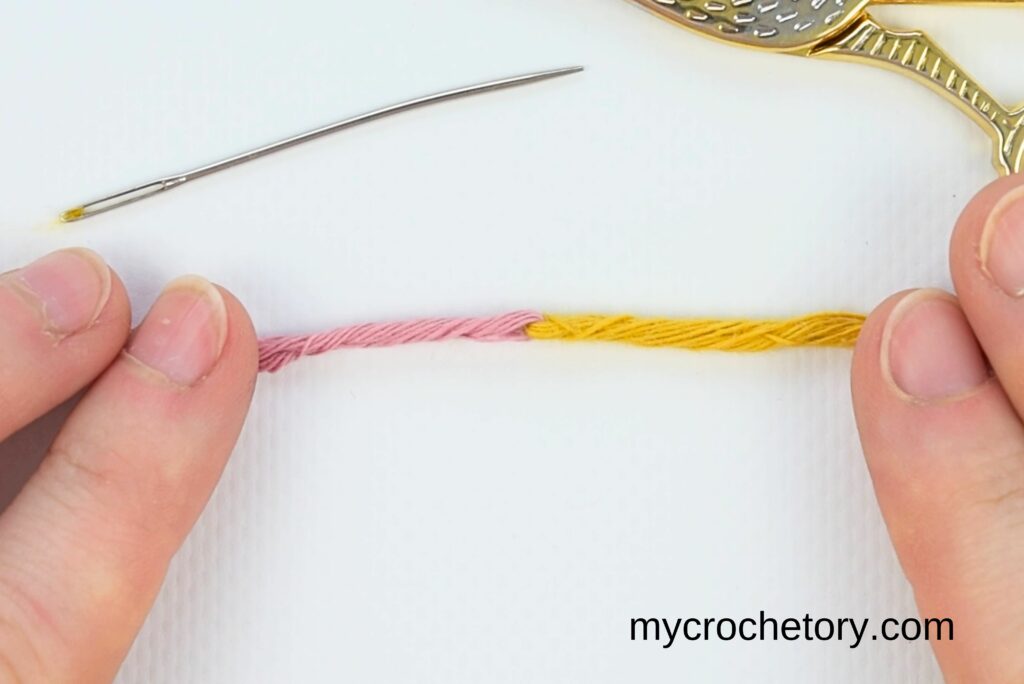
You’ve just learned how to do a Russian join for a smooth, seamless connection ready for more stitching.
Tips for Mastering How to Do a Russian Join
- Match Yarn Thickness: This technique works best when both strands are similar in thickness, so your join doesn’t show.
- Practice on Scrap Yarn First: I found this super helpful when I was starting out. Practicing how to do a Russian join on scrap yarn is a great way to feel confident with the technique!
- Take Your Time with Slippery Yarns: Acrylic and other slippery yarns might need a few more inches of weaving to be extra secure.
When Knowing How to Do a Russian Join Comes in Handy
Knowing how to do a Russian join is a lifesaver for large projects, yarn balls with color changes, and whenever you’re working with different colors of yarn.
It’s also amazing for any project that needs a clean finish – whether that’s the edge of a blanket, end of a row, or your favorite crochet garment.
Alternatives to the Russian Join
If you want to explore other methods, here are a few alternatives:
- Magic Knot: A quick knotting method, though it does leave a small knot. If you’re interested, I wrote a whole post on it, including a Magic Knot tutorial.
- Spit Splice: Great for animal fibers and similar yarns but isn’t ideal for synthetics.
Give the Russian Join a Try!
Now that you know how to do a Russian join, you’re set to tackle yarn transitions with a smooth, seamless finish.
The Russian join technique is one of the best ways I’ve found to make yarn transitions smooth and seamless. It’s a small technique with a huge impact, and once you try it, you might just find it becomes your go-to join for everything.
So go ahead – grab your yarn needle, two yarns, and try how to do a Russian join. You’ll love the result!
MORE CROCHET PRO TECHNIQUES
If you found this Russin Join Yarn tutorial helpful, you might also like posts:
- How to foundation single crochet
- How to double crochet 2 row at once
- How to make a slip knot – 3 Easy Ways
- How to crochet standing stitches
- How to crochet ribbing
- Mattress stitch join tutorial
Don’t forget to save this Pin for easy reference: 📌
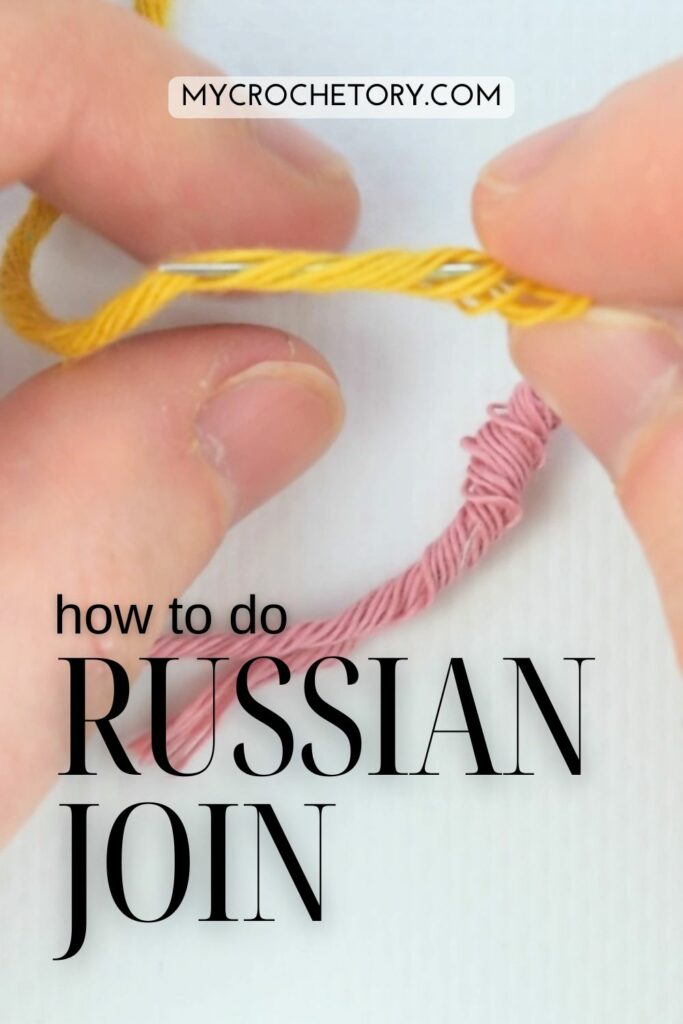
I’d love to hear about your crochet adventures and see your beautiful creations. Drop a comment below sharing your thoughts, questions, or even your favorite crochet tips! Your voice adds a vibrant thread to our forum community.
Sharing is caring! If you found this guide helpful, consider spreading the love. Click the share button and inspire other crocheters.
Happy crocheting, and may your yarn always be tangle-free!
Join my Facebook Group and Official Ravelry Group where you can find necessary support, you can ask questions or share your finished projects.
You can also follow my Instagram, Facebook page and Pinterest.

Leave a Reply